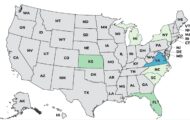A statement that two more people in the Flint area have been added to the death toll of the Legionnaires’ Disease outbreak has been released by the Michigan Department of Health and Human Services (MDHHS). That outbreak may be linked to the city’s contaminated water supply. Public health officials reviewed hospital data and discovered three more cases; two of those people died. Now 12 people are dead from Legionnaires’ Disease in that city in this particular outbreak.
 Ninety-one confirmed cases of the illness were diagnosed from June 2014 through October 2015, after a city manager appointed by Republican governor Rick Snyder, changed the city’s water supply from the Detroit Water and Sewerage Department to the Flint River to save money. Residents immediately noticed that the water coming out of their taps was smelly and murky. This water was so corrosive, in fact, that it began leaching lead from the aging pipes throughout the city. Many children have been diagnosed with lead poisoning in that city after the switch.
Ninety-one confirmed cases of the illness were diagnosed from June 2014 through October 2015, after a city manager appointed by Republican governor Rick Snyder, changed the city’s water supply from the Detroit Water and Sewerage Department to the Flint River to save money. Residents immediately noticed that the water coming out of their taps was smelly and murky. This water was so corrosive, in fact, that it began leaching lead from the aging pipes throughout the city. Many children have been diagnosed with lead poisoning in that city after the switch.
“To date, 91 cases and 12 deaths have been identified in total for 2014 and 2015 in Genesee County,” said Dr. Eden Wells, Chief Medical Executive with the MDHHS. Of the three additional cases, two were not appropriately reported, and the third was reported in a different area.

Attorney Eric Hageman represents clients sickened with Legionnaires’ disease and the families of those who have died from the illness. Contact him by calling 1-888-377-8900.
The poor water quality may have been a factor in the increase in Legionnaires’ Disease cases. The water from the Flint River was high in organic matter that feed the pathogenic legionella bacteria. The number of LD cases over the time frame specified would normally be about a dozen.
The symptoms of Legionnaires’ Disease include chills, fever, cough, muscle aches, shortness of breath, confusion, fatigue, loss of appetite, and diarrhea. The symptoms are very similar to pneumonia, but Legionnaires’ Disease has a much higher fatality rate. This illness is not usually diagnosed until a large number of people start presenting with the same symptoms.
People who are most at risk for contracting this illness are over the age of 50, current or former smokers, people with chronic lung diseases, and those with a weakened immune system. The fatality rate of Legionnaires’ Disease is usually around 30%.
About 50 of those sickened and some of those who died in this outbreak were patients at the McClaren Flint hospital that is served by the City of Flint municipal water system in the two weeks before they got sick. Legionella bacteria were found in the hospital’s water supply.




